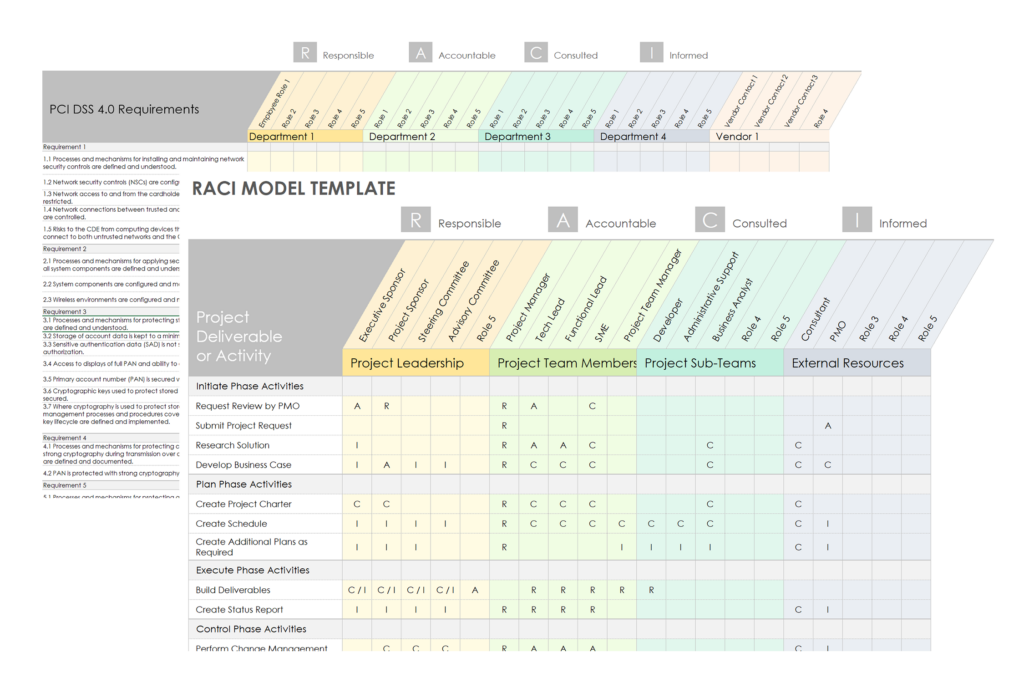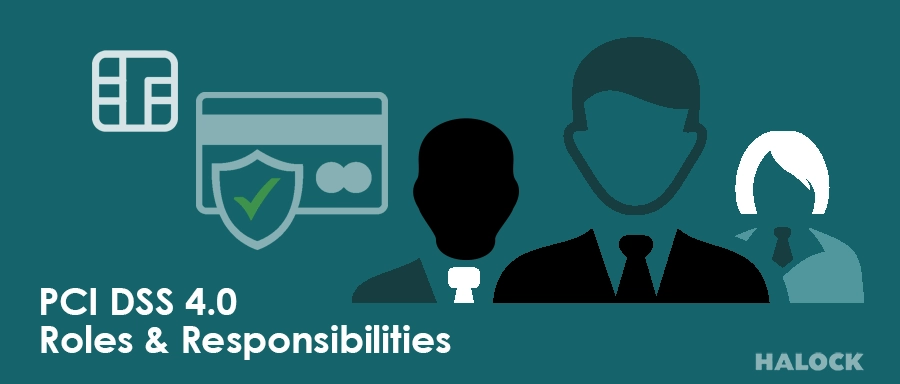Organizations subject to Payment Card Industry Data Security Standard (PCI DSS) oversight face a critical upcoming deadline. April 1, 2024, serves as a significant benchmark in the shift towards PCI DSS v4.0. Although several of the new requirements are not mandated until 2025, several prerequisites need to be addressed by this coming April to comply with new requirements immediately applicable in the updated standard.
Documenting Roles and Responsibilities
Businesses subject to the data security standard are required to enforce specific controls under PCI DSS v4.0. While these controls mirror those found in the previous version 3.2.1 from a technical standpoint, the forthcoming April deadline introduces a new emphasis on formally documenting roles and responsibilities associated with PCI DSS requirements. Notably, 11 of the 12 requirement sections, there is a stipulation labeled as requirement X.1.2, articulating that:
“The roles and responsibilities for performing activities in Requirement X are documented, assigned, and understood.”
PCI Requirement Section X.1.2
For instance, the first PCI DSS is as follows:
Requirement 1: Install and maintain network security controls.
Network security controls, such as firewalls and other network security technologies, serve as policy enforcement points regulating traffic between network segments according to established policies or rules. In the context of PCI DSS v4.0, requirement 1.1.2 highlights the new requirement for thorough documentation of those responsible for these controls.
During a PCI DSS assessment, an assessor will look for this documentation as evidence that the organization has a structured approach to maintaining compliance. Assessors will also verify these responsibilities are assigned and understand by interviewing the responsible employees. Other benefits of role and responsibility documentation include:
- Enhanced Clarity and Accountability as it specifies distinct accountability for PCI DSS compliance, streamlining the management and oversight of compliance-related activities.
- Improved Compliance Efficiency as it prevents redundancy and oversight in compliance efforts, ensuring all aspects are appropriately addressed.
- Facilitates Training and Awareness as clearly defined responsibilities improve the effectiveness of training and awareness initiatives.
- Streamlined Incident Response as knowing the specific roles involved simplifies and accelerates the incident response process.
What are PCI DSS Responsibilities?
PCI DSS responsibilities outline the range of actions and security measures organizations must adopt to comply with the PCI DSS. Responsibilities involve but are not limited to maintaining policies and procedures, deploying security controls, performing regular security evaluations, ensuring the integrity of systems and networks, educating staff on security protocols, and meeting precise criteria for the storage, processing, and transmission of cardholder information.
Using a Matrix to Assign Responsiblity Roles
Implementing a matrix offers a systematic approach for delineating and documenting responsibilities within an organization or among various entities engaged in payment card processing. The matrix can help to clarify who is accountable for each responsibility by outlining the tasks, duties, and compliance obligations of each entity.
For large organizations, PCI responsibility roles will be dispersed amongst internal personnel roles. Here the development of a detailed RACI framework is recommended. The RACI framework helps delineate who is directly responsible for executing the tasks, who is ultimately accountable for the outcomes, who should be consulted during the process, and who needs to be informed about the decisions and outcomes. The specific components of a RACI matrix include the following:
- Responsible: This is the person or group who actually performs the work to achieve the task or deliverable.
- Accountable: This individual who is ultimately answerable for the correct and thorough completion of the task or deliverable. They are the one who approves the work that Responsible party provides.
- Consulted: This is any individual that provides input based on their expertise before the work begins. They are consulted to offer their advice, insights, and recommendations.
- Informed: These are individuals that need to be kept in the loop throughout the progress of the task completion even though they are directly involved in the task’s execution or planning.
HALOCK PCI DSS 4.0 RACI MODEL

How HALOCK can Help
If the approaching April 1 PCI v4.0 requirements have you concerned, or if you’re looking for confirmation that your preparations are on point, HALOCK Security Labs stands ready to assist. Our Qualified Security Assessors (QSAs) have developed 4.0 framework materials, such as the PCI DSS 4.0 RACI matrix that clients can use to make their 4.0 transition a smooth one. We have navigated organizations through PCI DSS transitions since version 1, ensuring you meet the updated standards confidently. For insight into the newly required Roles and Responsibilities, contact us today.
PCI DSS Requirements
PCI DSS Requirement 5.4.1: Anti-spoofing controls such as DMARC, which stands for Domain-based Message Authentication, Reporting and Conformance, Sender Policy Framework (SPF), and Domain Keys Identified Mail (DKIM) can help stop phishers from spoofing the entity’s domain and impersonating personnel.
Clarification on eCommerce Outsourcing PCI DSS requirements 6.4.3 and 11.6.1
Unpacking the New PCI DSS Password Standards
Is Your Organization Prepared for PCI DSS Automation – Requirement 10.4.1.1?
What is the PCI DSS v4 Authenticated Scanning Mandate – Requirement 11.3.1.2?
What is the PCI DSS v4.0.1 Requirement for PoLP – Requirement 7.2.5?
The New PCI DSS v4.0.1 Software Catalog Mandate – Requirement 6.3.2
How to Analyze An Attestation of Compliance (AOC)
INFORMATION SECURITY PRIMERS
Primer on Post-Quantum Cryptography (PQC)
A Primer for AI Legislation and Litigation: Trends and Resources
A Primer to Frictionless Authentication
A Primer to Russian Intelligence “Snake” Malware
A Primer to Security Access Service Edge (SASE)
A Primer to Digital Risk Protection Services (DRPS)
A Primer to Cloud Access Security Brokers (CASB)
A Primer to Zero Trust Security
A Primer to Deception Technology
Managing AI Risks in Organizational Adoption and Usage

